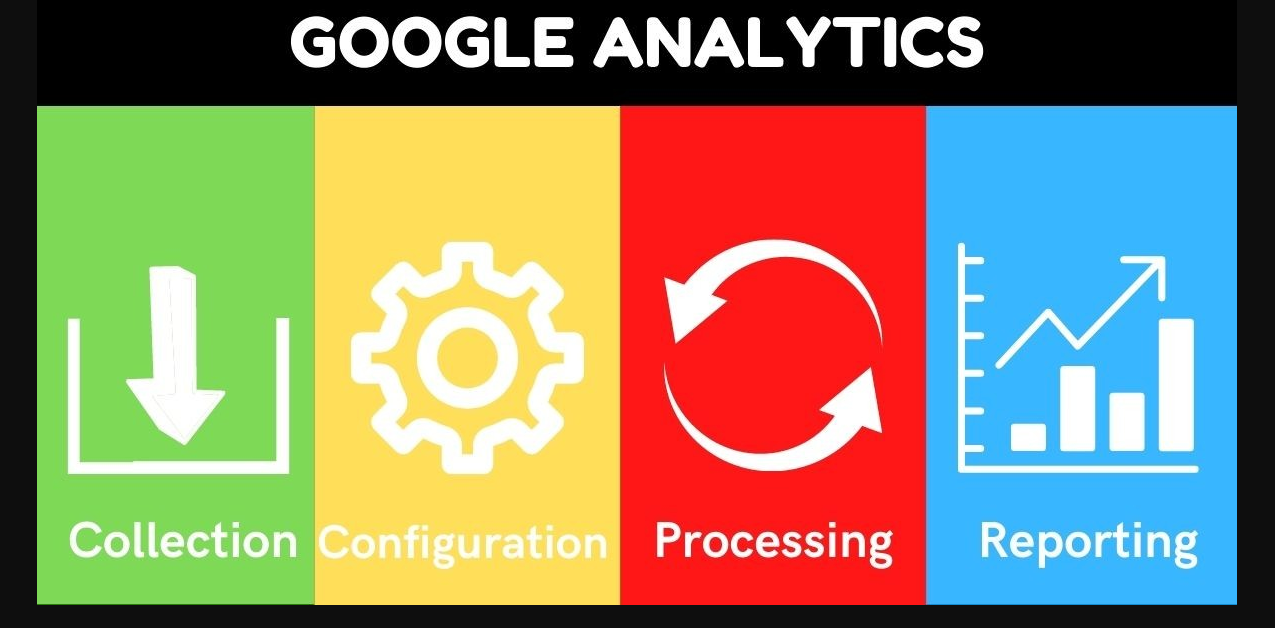How to conduct A/B testing of an online store based on data
-
Galina Ostrachinyna
Copywriter Elbuz
Do you know how to use numbers to increase your profits? How to conduct A/B testing of an online store? In this article, we will reveal all the secrets and talk about numbers that will change your business forever. Will you be ready to find out the truth? This could change everything...

Glossary
A/B testing: an experimental research method in which two or more versions of the same element (for example, a web page, banner ad or email) are shown randomly to different groups of users to determine which version produces more successful results.
Online store: an electronic platform on which a wide range of goods and services are offered for sale via the Internet .
Numbers and data: information obtained by analyzing and measuring various metrics and indicators used for decision making and determining the effectiveness of various options and strategies.
Conversion: percentage of users who completed a target action (such as making a purchase or subscribing), from total number of visitors or users.
Split testing: A/B testing method in which two or more versions of the same elements are shown simultaneously to different groups of users in order to compare their performance and determine the best version.
Goals and benefits of the method: the main goals of A/B testing include improving user experience, increasing conversions, increasing average check and improvement of other business indicators. Advantages of the method include the ability to make step-by-step and statistically based decisions, reduce risks and improve results.
A/B testing tools: software or online tools designed to create, run, and analysis of A/B tests. Examples of such tools include Google Optimize, Optimizely, VWO and other testing and optimization platforms.
Split testing: How to improve the efficiency of your online store using numbers and data
Introduction
One of the key tasks of an online store owner is to increase conversion, that is, turn visitors into buyers. While design and content can play an important role in capturing the attention of potential customers, making changes based on guesswork or intuition can be counterproductive. Instead, we can rely on split testing, a tool that uses numbers and data to make informed decisions.
What is split testing?
Split testing, also known as A/B testing, is a marketing technique that allows you to compare the performance of different online store web pages based on numerical characteristics. This method consists of sequentially presenting site visitors with two versions of the page, differing by changing one or more elements. By collecting statistics, we can evaluate how these changes affect target metrics such as conversion.

Why do split testing?
Using split testing in an online store can bring a number of benefits. For example, you can:
Increase conversions: Split testing allows you to determine which changes lead to more engagement potential buyers and, ultimately, higher conversions. Based on this data, you can make appropriate changes and improve your results.
Optimize user experience: The results of split testing will tell you which elements affect visitors' experience on your site . Based on this data, you can optimize the user experience and make it more convenient and enjoyable.
Evaluate the effectiveness of changes: Split testing will help you systematically evaluate and adjust changes to your online store. You'll be able to see which changes really work and which ones don't.
How to do split testing?
When conducting split testing, there are several important steps that you need to follow:
Determine target characteristics: Before you start split testing, you must clearly define which metrics you want to improve. For example, this could be conversion, average check, refusals, and others.
Create page variations: Create two or more page variations that differ in important elements. For example, you can change the title, the color of the "Buy" button, or the placement of banners.
Split traffic: Split traffic between page variations. It is important that visitors receive one of the options at random.
Collect data: Allow different variations of the page to accumulate statistics over a period of time. Collect data on the number of visits, conversions, average check and other indicators that you want to measure.
Analyze the results: Analyze the data collected from split testing. Determine which page option performs best based on your target characteristics.

Split testing example
Let's look at an example of using split testing in an online store. Let's say you want to know how changing the color of the Buy button can affect conversions.
You create two variations of the page: one with a green Buy button and one with an orange button. You then route traffic between these two options randomly.
After some time of data collection, you discover that the page with the orange button has a 10% higher conversion rate. This means that changing the color of the button has a positive effect on visitors' decision to make a purchase.

Split Testing: Best Practices
There are several best practices when doing split testing that will help you get the best results:
Change one element at a time: To understand exactly what change affects the results, only one element should be changed. For example, if you changed the color of a button and the text on a page at the same time, it will be difficult to determine which change produced a particular result.
Consider seasonal factors: Seasons and holidays can influence consumer behavior. When conducting split testing, consider these factors and put the results into context.
Don't forget about mobile devices: With the growing number of mobile device users, make sure your splits are tests include different versions of the page for mobile devices and desktop computers.
Expert's View
Marketing and website optimization experts actively use split testing to improve the effectiveness of online marketing. shops. Olga, an experienced marketer, says: “Split testing allows us to make decisions based on facts, not hypotheses. We can pinpoint which changes lead to the best results, thereby improving the user experience and increasing conversions.”
Summary
Split testing is a powerful tool that can help online store owners improve the results of their websites. Using numbers and data, you can optimize user experience, increase conversions, and make informed decisions. Keep the best practices in mind and analyze the results of the split testing section to achieve better results in your business.
"Split testing is a powerful tool that allows you to make decisions based on facts, not hypotheses." - Olga Miroshnik, marketing expert at Citrus.
Comparison table:
| USEFUL | NOT USEFUL |
|---|---|
| Defining goals | Changing multiple elements at once |
| Creating variations | Ignoring seasonal factors |
| Traffic sharing | Lack of mobile version |
| Data collection | |
| Results analysis |

Summary
Split testing is a powerful tool that allows online store owners to optimize their sites to achieve better results. By following best practices and analyzing the results, you can increase conversions and improve the user experience. Remember to use data and facts to make informed decisions and don't be afraid to experiment. Success in split testing can lead to significant growth for your online store and the achievement of your business goals.
How to conduct A/B testing of an online store
How to conduct A/B tests correctly: secrets of effective testing
A/B testing is a powerful tool for optimizing an online store. It allows you to experiment with different versions of the page and find the version that is most attractive and effective for customers. In this section, we'll take a closer look at the number-based process of conducting A/B testing for an online store and share best practices with you.
Creating Pages A and B
The first step in conducting A/B tests is to create two versions of the page: A and B. However, they should differ in minor changes in design. For example, you can change the color of the Buy button or the location of the main image. The purpose of such changes is to determine which design solutions may be more attractive to your audience.

Homogeneous audience and required number of impressions
After creating pages A and B, you need to show to a homogeneous audience. This means that both versions of the page will be launched for the same user groups. In this way, it will be possible to obtain reliable statistical data on their effectiveness.
The number of impressions of each version of the page should be sufficient to produce reliable results. It is usually recommended to conduct A/B testing on several thousand users to account for all possible variations in customer behavior.
Measuring conversion and determining the most attractive version
For each version of the page, the conversion rate is measured during A/B testing. This allows you to evaluate which version of the page leads to more purchases or other targeted user actions.
At the end of testing, the version of the page that is most attractive to customers is determined. This is the one that showed the highest conversion rate. This version will be the most effective in terms of sales.
Questions to Consider:
- What changes can you make to your page design to attract more customers?
- How to determine how many impressions are needed for reliable A/B testing?
- Which version of the page will be most effective in terms of sales?
Benefits of conducting A/B testing based on numbers
A/B testing based on numbers is one of the most effective methods for optimizing the Internet store. Here are some benefits of this approach:
Informed decisions. Number based A/B testing results are based on facts and statistics. This allows you to make informed decisions based on data.
Information value. Number-based A/B testing provides valuable data about customer preferences and behavior. This allows you to better understand what works for your audience and what changes can lead to increased conversions.
Final results. A/B testing based on numbers allows you to determine the most successful version of the page, which leads to higher store performance and higher conversions.
Examples of successful A/B testing
ANSWEAR - an online store specializing in sportswear, conducted A/ B testing for your product page. They changed the location of the "Buy" button and added additional product images. After testing, it was discovered that the new version of the page showed a 15% increase in conversion compared to the original version.
Collection, an online women's clothing store, conducted A/B testing for its homepage. They changed the color scheme and model photos. After testing, it was found that the new version of the page attracted 20% more buyers.

Important points for conducting successful A/B testing
To achieve the best results when conducting For A/B testing of an online store, it is recommended to consider the following factors:
Define a clear hypothesis: Before starting testing, define the exact changes you want to test and formulate a hypothesis.
Collect enough data: To get reliable results, make sure you have enough impressions for each version of the page.
Analyze the results: Take time to analyze the results and examine statistical significance. Pay attention to differences in conversion rates and consider possible factors influencing results.
Summary
A/B testing of an online store based on numbers is an effective way to optimize and increase conversion. It allows you to test different versions of the page and determine the one that is most attractive to customers. Consider the recommendations in this section and conduct A/B testing to get the most out of your online store.
Useful steps:
| Important to do | Don't | |
|---|---|---|
| Hypothesis | Formulate a clear hypothesis and define the exact changes you want to test. | Conduct tests without a clear hypothesis. |
| Page Impressions | Collect enough data for each version of the page. | Do not run tests with insufficient impressions. |
| Analyze the results | Assess the statistical significance of the results and note differences in conversion rates. | Neglect to analyze the results and not take into account possible factors influencing the results. |
.jpg)
A/B testing is a tool that will help you make informed decisions and improve the efficiency of your online store. Remember to conduct A/B tests regularly to stay competitive and satisfy your customers.
"Number-based A/B testing allows you to make informed decisions based on data and statistics." - Justin Rees, A/B testing expert at eBay.
Goals and benefits of the A/B testing method
A/B testing is a powerful tool for optimizing online stores. It allows you to use numbers and data to make changes in your store and increase conversions. In this article, we'll look at the basics of A/B testing and explain its benefits and purposes.
Why conduct A/B testing in an online store?
A/B testing helps you get the most out of your existing traffic. It allows you to achieve conversion growth without spending a lot on paid traffic. All economic indicators of an online store, such as sales volume, leads and profitability, react to the slightest changes to the site. A/B testing allows you to determine which changes on store pages lead to increased conversions.

What can you test?
Using A/B testing, you can check and change any website elements that affect customer behavior: headings and subheadings, information content, phrases and buttons calling the visitor to action, links, photos, videos and user reviews. The simplest testing option is to compare two versions of a site element (A and B). More complex split tests allow you to explore the influence of other characteristics on customer behavior, such as prices, delivery conditions, or the timing of free product testing.
How to conduct A/B testing?
Before conducting A/B testing, you need to define clear research goals. What do you want to improve or test? For example, you may want to improve conversion on your checkout page or test which headline attracts more customers.
Once the goal is defined, elements to test are selected and two versions of the page or element are created with different variations. One version (A) remains unchanged, the second version (B) includes modifications that you want to test.
Next, traffic is divided between two versions of the page in a certain ratio. For example, 50% of the traffic is sent to version A, and the other 50% to version B.
During testing, data is collected on visitor behavior (clicks, purchases, time on page, etc.) .

Analysis of results and benefits of A/B testing
After testing is completed, data analysis is carried out. Analytics allows you to determine which version attracted more customers and increased conversion. Based on this data, changes can be made to the website to improve its performance.
Main advantages of A/B testing in online stores:
Data instead of guesswork: A/B testing is based on collecting and analyzing actual data about user behavior. This helps you make decisions based on concrete facts rather than guesswork or assumptions.
Improving conversion and profit: Using A/B testing, you can gradually improve the conversion and profit of your online store. Even small changes you discover through testing can lead to significant increases in sales and revenue.
More effective marketing decisions: A/B testing allows you to conduct experiments and study the impact of different marketing strategies on customer behavior. This helps identify the most effective solutions and focus resources on promotions that produce the best results.
Continuous Improvement: A/B testing is not a one-time process, but a continuous cycle of optimization. As you test and analyze the results, you will learn more about your customers and their preferences. This will allow you to continuously make changes and improve your store.
Summary
A/B testing is a powerful tool for optimizing online stores and increasing conversions. It allows you to use numbers and data to make changes to your store and improve its results. Approach A/B testing systematically, set clear goals and carefully analyze the results. This way, you can achieve significant profit growth for your online store.
"Express your insecurities widely, for they make you impressive. Uncertainty is the best news, so be sure to share it with others." - Andy Borowitz, American writer, comedian, satirist and actor.
Overview of using A/B testing:
| Useful for | Not recommended |
|---|---|
| Improving conversion | Too many simultaneous tests |
| Optimizing the user experience | Lack of a clear testing goal |
| Making informed decisions | Using inadequate metrics |
| Identifying customer preferences | Unprofessional testing |
| Gradually improving store performance | Insufficient testing sample size |
Now that you know the purposes and benefits of A/B testing, you can use this method to improve your online store. Remember that A/B testing is an ongoing process that requires a systematic approach and data analysis. Be willing to experiment and make informed decisions based on facts. Good luck optimizing your online store!

Split testing: increasing conversion in an online store
An Intelligent Approach to Improving Performance
When it comes to running a successful online store, increasing conversion rates is an integral part of your growth strategy. However, how can you determine which changes to your site will be most appropriate and effective? The simplest and most universal way to achieve this goal is to conduct split testing, or A/B testing.
Basics of split testing
Split testing consists of comparing two versions of a page, A and B, based on which the data is analyzed and the most successful variation is determined. This technique can be used to test various elements of a web page, such as headings, button colors, page layouts, and more.
Traffic and Using the Right Traffic Sources
To conduct reliable and effective split testing, you need to ensure that your website has sufficient traffic. The more users visit pages A and B, the more accurate and meaningful results you can get. To track which traffic sources bring more visitors to your website, you can use analytics tools such as Google Analytics.

Conversion recording and data analysis
After the split testing time has expired, it is necessary to correctly analyze data and calculate conversions on pages A and B. To do this, you can record the number of calls made, applications or coupons provided. Indirect performance indicators can be price list downloads or time spent on the page.
Using the Right Parameters and Experimental Purity
When conducting split testing, it is important to select and study the correct parameters that will have the greatest impact on conversion. Incorrect use of testing methodology can lead to incorrect conclusions. Accuracy and purity of the experiment are fundamental conditions for obtaining reliable results.
Benefits of split testing in online stores
Objective decision making: Split testing allows you to make decisions based on evidence rather than assumptions or preferences.
Save time and resources: With split testing, you can avoid the unnecessary costs of implementing changes that don't work.
Increased conversions: Optimizing pages based on split testing data can significantly increase conversions and, consequently, profits online store.
Summary
Split testing is a powerful tool for increasing conversion in online stores. It allows you to effectively and objectively test changes to web pages, based on which you can make informed decisions. Do not forget that success in this technique depends not only on conducting a correct experiment, but also on processing and analyzing the data obtained.
"Split testing is a wonderful way to find out how your changes will impact users. Don't be afraid to experiment and make decisions based on evidence." - Yaroslav Oleinik, expert in A/B testing at Foxtrot.
| What's useful | What NOT to do |
|---|---|
| Use split testing to determine the most effective changes | Change all page elements at once |
| Record and analyze the conversion of web pages | Ignore indirect indicators and effects of change |
| Conduct a clean and correct experiment | Ignore the rules of split testing |
| Make decisions based on data and testing results | Treat split testing as the art of guessing user preferences |

Tools to conduct A/B testing
A/B testing is an effective method for optimizing online stores, which allows you to make changes to a website based on numbers and data in order to increase conversion. To successfully conduct A/B testing, you need to use special tools and services that will help you collect and analyze the necessary information.
One of the most popular tools for conducting A/B testing of online stores is the statistics service for websites Google Analytics. It provides functionality for split testing and is free for users. Google Content Experiment is an effective and convenient tool for conducting A/B tests, which is fully integrated with Google Analytics. This tool allows webmasters to create up to 5 parsed pages, each with its own URL, avoiding redirects that can annoy visitors.
Using Google Analytics, you can combine traffic from the original page and the alternate page, making it easier to analyze the results without affecting user response metrics. Another advantage of Google Analytics is the ability to set a specific goal for conversion tracking, which allows you to more accurately evaluate the effectiveness of testing.

Besides Google Analytics, there are other tools for conducting A/B testing, such as Optimizely, VWO and Convert. These paid services provide more advanced functionality and tools for more accurate and in-depth data analysis.
Regardless of the tool you choose, there are several important aspects to consider when conducting A/B testing. First, it is necessary to define the specific purpose of the test and understand what success criteria will be used to evaluate the results. Secondly, it is necessary to determine what percentage of visitors will participate in testing. Third, you need to establish what events will be tracked during testing to determine conversion. For example, this could be a click or transition to a site via an external link.
It is important to note that conducting A/B testing requires not only technical training and the use of specialized tools, but also competent analysis of test results. To get the most out of A/B testing, it is recommended to contact experienced marketing and website optimization professionals who can evaluate the test results and offer recommendations for further actions.

Advantages of using tools for A/B testing in online stores:
- Website optimization based on data and numbers
- Increase conversion and effectiveness of marketing campaigns
- Ability to split test and compare different options
- Flexibility and ease of use of tools
- Ability to track events and set conversion tracking goals
Disadvantages of using tools for conducting A/B testing in online stores:
- The need for technical training and configuration of tools
- Limitation of free functions in some tools
- Costs of using paid services
- The need to competently analyze test results to make the right decisions
Conclusions and recommendations
A/B testing is a powerful tool for improving the efficiency of online stores. Using specialized tools allows you to conduct testing based on numbers and data, which helps you make changes to your site and increase conversions. However, it is necessary to take into account the shortcomings of the tools, such as technical difficulties and limitations of free functions. It is recommended to contact experienced specialists who will help you choose the most suitable tool and analyze the test results to make the right decisions.
"A/B testing is an integral part of the process of optimizing online stores. Correct use of tools and competent analysis of the results will help achieve significant conversion growth and increase the effectiveness of marketing efforts." - Randel Evans, Website Optimization Expert.
Table: Advantages and disadvantages of tools for conducting A/ B testing in online stores
| Advantages | Disadvantages |
|---|---|
| Data-driven optimization | Technical training |
| Increase conversions | Limitations of free features |
| Split testing | Costs of paid services |
| Ease of use | Analysis of results |
| Event Tracking |

Frequently asked questions on the topic “How to A/B test an online store based on numbers”
What is split testing or A/B testing?
Split testing, also known as A/B testing, is a technique that compares two or more versions of a web page or interface elements to determine which version is superior. effective in achieving set goals.
How are A/B tests performed?
A/B tests are conducted by randomly dividing the audience into two (or more) groups. Each group sees different versions of the item being tested, and the results are then compared to determine the most effective version.
What are the goals and benefits of A/B testing?
The purpose of A/B testing is to determine the optimal version of an element that will lead to the highest conversion rates. The benefits of this method include improved user experience, increased effectiveness of marketing campaigns, and increased profits for the online store.
How can you use split testing for an online store?
Split testing can be used to test different versions of the home page, product page layout, color schemes, headers, buttons, feedback forms, and other elements of an online store to determine which changes lead to better results.
What tools can be used to conduct A/B testing?
There are many tools for conducting A/B testing, including Google Optimize, Optimizely, VWO, AB Tasty and others. The specific tool you choose depends on your needs and budget.
Thanks for reading - you're now an A/B testing guru! 🎉
👏 Congratulations! Now that you have finished reading this article, you have become true experts in A/B testing for online stores. 😃
📈 You've learned the basics of A/B testing and how to use numbers and data to make informed decisions to improve your store and increase conversions.
Now you have the knowledge and tools to optimize your website, improve your marketing campaigns, and wow your customers with a great user experience.
🚀 I am sure that you are ready to implement this new knowledge into your work and get impressive results. Don't forget that A/B testing is a continuous improvement process, so be prepared to constantly experiment and improve the performance of your store.
🙏 Thank you for taking the time to read this article. I hope it was useful and inspired you to new achievements.
💪 So, go ahead - test, improve and achieve great success! Good luck with your A/B testing! 👍

- Glossary
- Split testing: How to improve the efficiency of your online store using numbers and data
- How to conduct A/B testing of an online store
- Goals and benefits of the A/B testing method
- Split testing: increasing conversion in an online store
- Tools to conduct A/B testing
- Frequently asked questions on the topic “How to A/B test an online store based on numbers”
- Thanks for reading - you're now an A/B testing guru!
Article Target
Educational, practical
Target audience
Owners of online stores, marketers, website optimization specialists
Hashtags
Save a link to this article
Galina Ostrachinyna
Copywriter ElbuzThe secrets of online store automation are revealed here, like the pages of a magic book of a successful business. Welcome to my world, where every idea is the key to online effectiveness!
Discussion of the topic – How to conduct A/B testing of an online store based on data
In this article, we will look at the basics of A/B testing for online stores. You'll learn how to use numbers and data to make changes to your store and increase conversions.
Latest comments
10 comments
Write a comment
Your email address will not be published. Required fields are checked *





























Tom
Very interesting article! I've always wanted to learn how to use A/B testing to increase conversions on my store. What exactly can I change to increase my sales?
Anna
Hello Tom! As a marketer, I have already used A/B testing in online stores, and I can share my experience. It's important to start with one change in the store, such as the color of the 'Buy' button. Your audience will almost always prefer a certain color. But remember, test results may be unexpected! 😄
John
Hello Tom! I agree with Anna that starting the test with button color changes is a good step. I also recommend testing different page headings or the layout of the main elements. Often, even small changes can have a noticeable effect on conversions! 💪
Sophie
Hello John! I totally agree. Also, I would advise testing the text on the buttons or messages about free shipping. Sometimes even small changes in words can influence a buyer's decision! 🛍️
Liam
Hello Sophie! Great ideas! I also suggest testing different options for offering discounts or bonuses on purchases. This can encourage the buyer to buy more items and increase the average check! 💸
Emily
Hello Liam! I would also add A/B testing of various product page design options. This way you can determine which elements can convince visitors to make a purchase. Well, we'll watch the test results! 🖥️
Oliver
Hello Emily! I am a developer, and I believe that the technical aspect also plays an important role. One of my suggestions is to optimize page load time. Nobody wants to wait, so a small change can make a big difference! ⏱️
Emma
Hello Oliver! I'm a designer and I'm all for optimizing loading times. In addition, I recommend testing different versions of product photographs, showing the most profitable and high-quality images. This helps to attract the attention of buyers! 📷
Grumpy
Your A/B testing and changes... It always seems to me that all these newfangled trends are meaningless and lead to nothing. Is it better to simply provide a quality product and service, instead of replacing old methods with dubious changes? 🙄
Lara
Hello Grumpy! I understand your point, but competition in online shopping is becoming increasingly fierce and buyers are becoming more demanding. A/B testing helps to identify what really influences their decisions and improve results. It’s always useful to develop and look for new opportunities! 😉